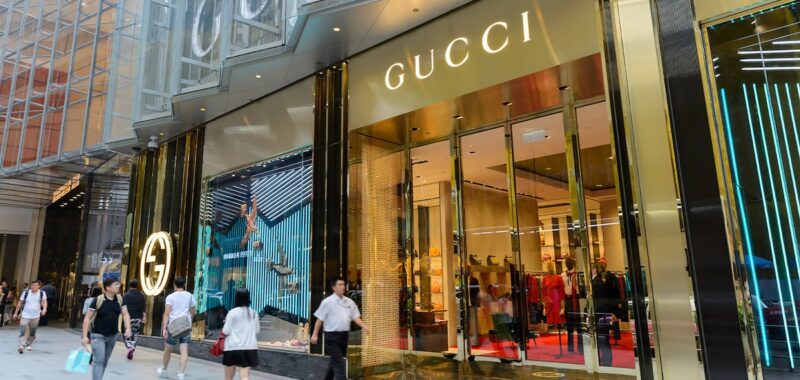
Multinationals have a puzzle that they need to tease out in China, the worldâs biggest market for luxury products: Whatâs driving a slump in sales? Is it because a slowing economy is leading people to tighten their belts, or a sign that the Chinese no longer believe many brands can hold their value?
This question matters because it affects luxury housesâ long-term prospects. If the problem is just a weak economy, they might accept recent earnings as a temporary rough patch and carry on business expansion as before. But if people start to see luxury products as mere commodities, brands have a much bigger problem and must start to cut back on supply and restore scarcity value.
In particular, executives need to worry about speculators. Just like trend-chasing quant funds and Japanâs Mrs. Watanabe, they take one-way price bets and no one in the industry really knows the scale of the gamble. The only difference, perhaps, is the lack of leverage â carry traders, for example, would typically take out cheap loans to invest in something that has higher returns.
This phenomenon is likely to be pronounced in China. After all, Chinese are a pragmatic bunch. Even when the economy was doing well, many buyers were making an investment case for their purchases. For instance, Chanelâs classic handbags have been well-loved by fashionistas, in part because of their resale value. The iconic French brand has been speeding up price hikes since 2016, doubling the cost of its medium classic flap bag from $4,900 to $10,800. As online resale platforms blossomed, many consumers have been able to ride on Chanelâs price hikes and sell their second-hand items for a profit.
Chanel typically reviews handbag prices twice a year, in March and September. It raised the flap bag prices by 6 percent to 8 percent this spring, with all its models retailing for more than $10,000. This makes Chanel as much an investment as a good, encouraging both speculators and end-consumers to purchase the newest lineups.
But the presence of speculators can also ruin iconic brands. Kweichow Moutai Co., Chinaâs most prestigious premium liquor distiller, is a good cautionary tale. From 2016 to early 2021, the wholesale price of its iconic Feitian baijiu rose 358 percent to a peak of 3,850 yuan ($536) per 500-millilitre bottle, drawing in an army of hoarders.
Prices of Moutai started to drop this spring, according to Bloomberg Intelligenceâs Ada Li. But it was the big midyear e-commerce shopping festival in June that broke the camelâs back. JD.com Inc. sold Feitian at only 1,499 yuan per bottle as a way to draw shoppers to its platform.
While the wholesale price seems to have stabilised in early August, investors have lost faith in this household brand. Thereâs now worry of oversupply and that speculators might be keen to lock in profit before the situation worsens again. UBS Group AG estimates that hoarders have piled up about 14 monthsâ worth of Moutai liquor supply over the years, with an average purchase cost of 2,079 yuan a bottle.
As China suffers from an economic Long Covid, itâs clear that brands with better resale value are much more resilient. Last year, the prices of Hermès International SCAâs second-hand products continued to grow, while many other luxury brands, including LVMH Moet Hennessy Louis Vuitton SEâs Louis Vuitton and Dior experienced a decline, according to Bernstein Research. This perhaps explains why Hermèsâ earnings in the second quarter were a lot prettier than LVMHâs. Kering SA, meanwhile, is at the bottom end of the table because its flagship, Gucci, has too many discounted channels, from private sales to outlet stores, mostly in Asia. Second-hand Gucci sells at about a 40 percent discount.
For now, the likes of Chanel and Hermès may take comfort that they can still raise prices amid this weak macro backdrop. But they need to be careful with inventory management. Past steady annual price increases have already drawn in one-way bets, not unlike how the Bank of Japanâs yield curve control attracted macro tourists to the yen carry trade. When the game of musical chairs stops â as markets feared in a rout early last week following a hike in interest rates â the unwinding can be very ugly.
By Shuli Ren

